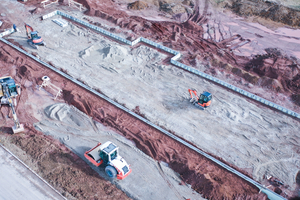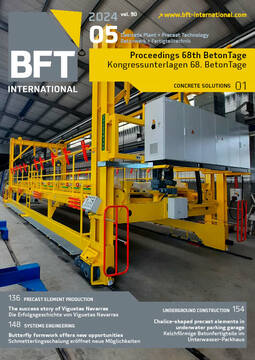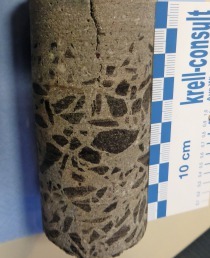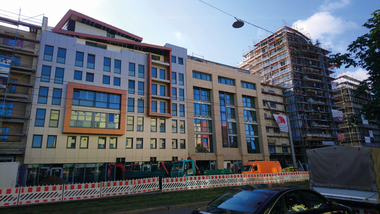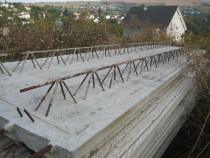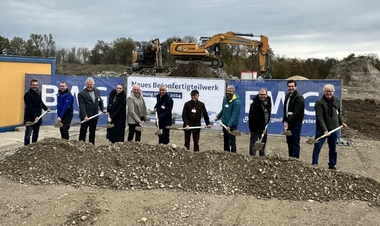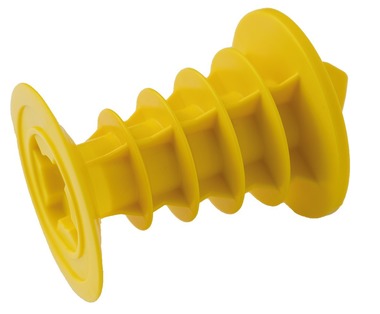New innovative precast frost protection
With patented innovations, the Glatthaar Keller company has decisively shaped the construction of basements and ground slabs over the last 40 years. Now, the company has introduced another revolutionary new development: the precast concrete frost skirt for ground slabs. Using this elements that are manufactured independent of the weather under perfect conditions in the precast concrete factory, Glatthaar Keller improves the efficiency at the construction site, makes handling easier for the workers on site, saves time and transport expenses for cast-in-situ concrete and reduces the concrete consumption by up to 93 % compared to a „frost skirt“ made of in-situ concrete. As far as CO2 savings and sustainability are concerned, the precast concrete frost skirt that is patent pending sets new standards, with reductions amounting to about 70 %.
„The development of the precast concrete frost skirt constitutes a milestone in the construction of ground slabs for single-family or two-family houses,“ states Joachim Glatthaar, the inventor and company founder. At first – as usually done – a trench is excavated on the basis of the building‘s geometry. Into this trench, the Glatthaar Keller company then places the precast elements that serve as „frost skirt“ for the ground slab to be built later. „A frost-resistant substructure is essential for first floor ground slabs of new buildings without basement in order to prevent damages due to frost exposure beneath the building,“ points out Dirk Wetzel, technical managing director at Glatthaar Keller.
Precast elements customizable
The individual precast elements are 3.75 m long, have a weight of 200 kg and are provided with a perimeter insulation made of extruded polystyrene (XPS) on one side that is embedded during concrete pouring at the factory. The precast elements can be placed exactly at the requested position using a mini digger, for example. On site, the length of the standard elements can be adapted effortlessly to the geometry of the building layout by cutting individual pieces from the precast elements.
Another great advantage: With the aid of laser technology, the professional workers of Glatthaar Keller place the upper edge of the precast element exactly to the level of the ground slab, that is concreted in the second step. Therefore, shuttering is also eliminated, which had to be erected so far and removed again as soon as the ground slab has hardened. „This means significant savings in time and costs,“ emphasizes Joachim Glatthaar.
Improved carbon footprint in new construction
One focus in the development was on the topic of sustainability. The aim was that as less material as possible had to be delivered to the construction site. Only by the use of precast elements, Glatthaar Keller achieved savings of up to 93 % in comparison to otherwise required concrete for the frost skirt cast on site – with improving the carbon footprint of the entire building. Joachim Glatthaar states: „Moreover, we use the excavation material of the trench for the precast concrete frost skirt, process it on site with a compound and incorporate the treated soil again into the space in between as backfilling. In this way, we reduce the number of transports to and from the construction site considerably.“
The company is manufacturing the slender precast concrete frost skirts at the main production plant of Glatthaar Starwalls located in Schramberg. As far as the production is concerned, the company also opts for an innovative process: The individual elements are manufactured in serial production by means of 3D printing, with Glatthaar Keller already having the required plant equipment and the know-how on the part of the employees.
CONTACT
Glatthaar Keller GmbH & Co. KG
Joachim-Glatthaar-Platz 1
78713 Schramberg-Waldmössingen/Germany
+49 7402 9294-1000

